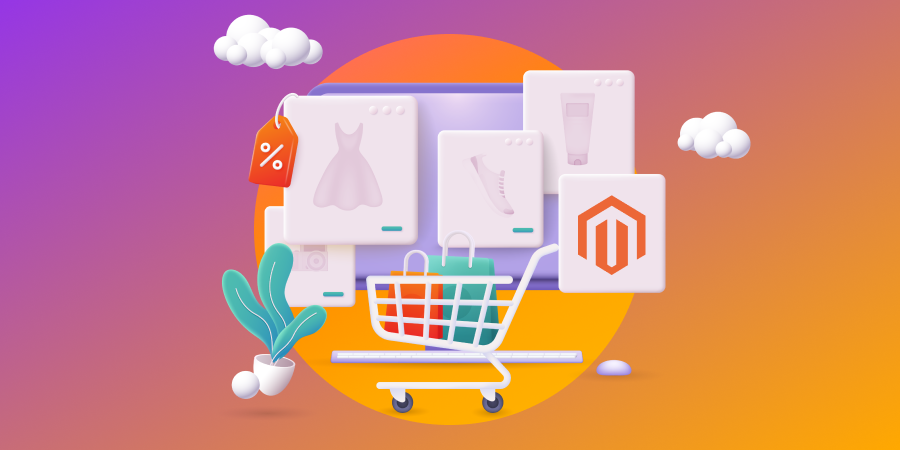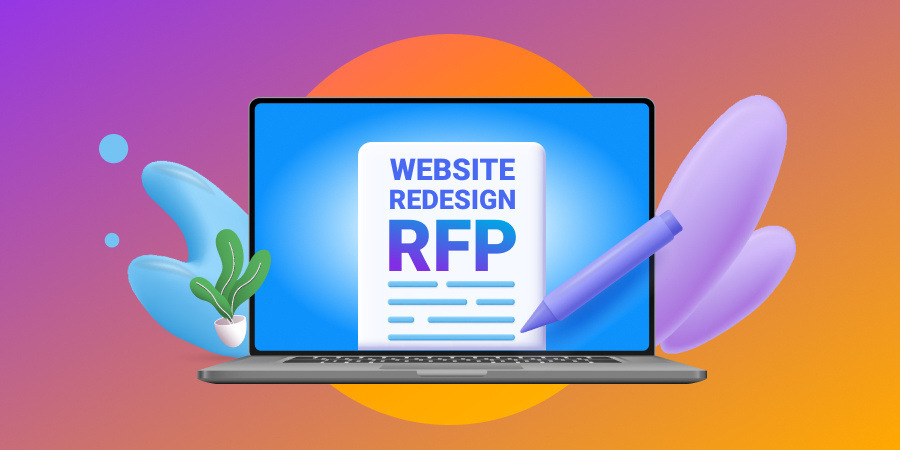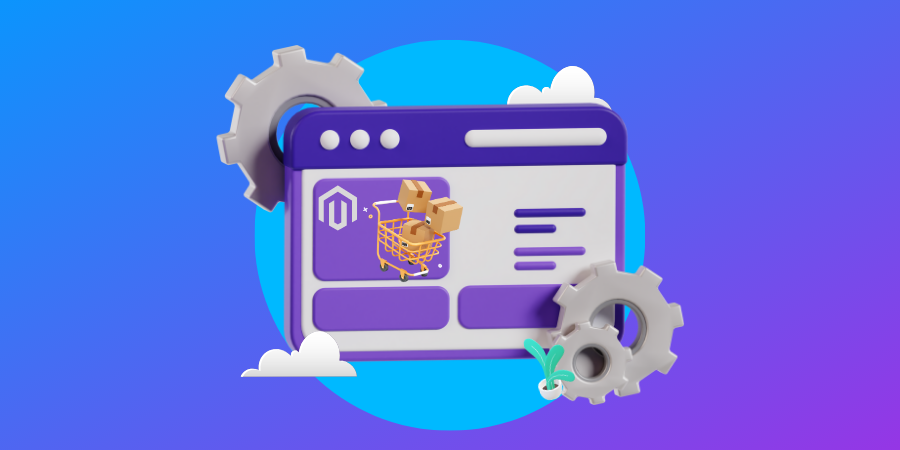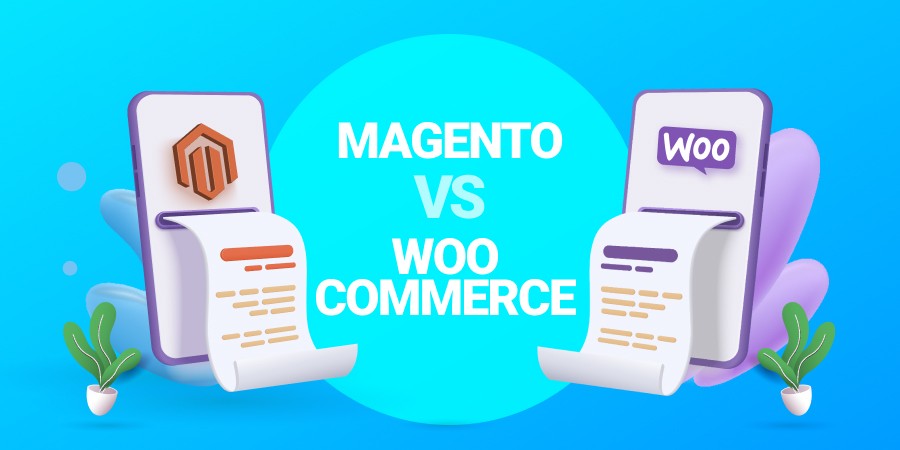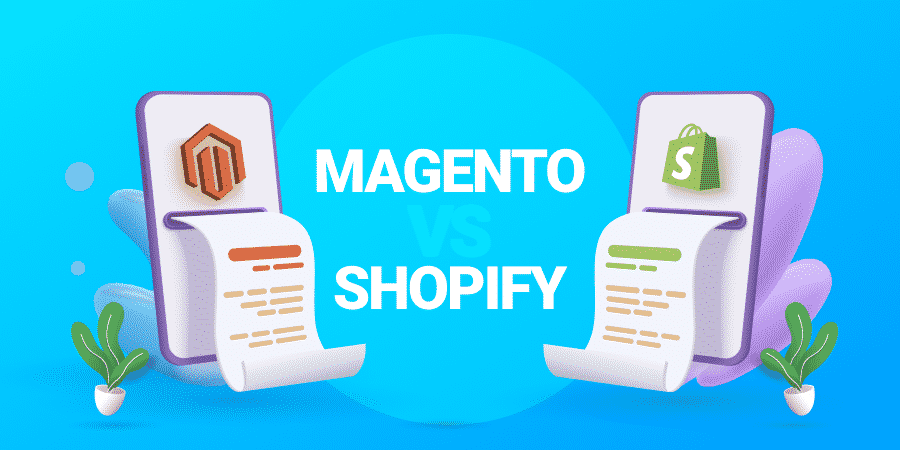Magento is a powerful eCommerce platform that allows for the highly customized and personalized shopping experiences that customers expect when shopping online.
From loyalty and rewards programs to social media feed integrations, private sale events and beyond, the features and functionalities of the Magento platform are nearly endless. Even better — each one is designed to be admin-friendly while allowing you to offer a superior experience to your online visitors.
As a full-service web design agency that specializes in Magento, we know a thing or two about the capabilities of this platform, and we’re here to share.
Continue reading as our experts at Digital Silk detail the top five features to leverage when designing for Magento, and share top tips, examples and our own Magento design process.
Digital Silk builds custom Magento websites. Request A Proposal
5 Features To Leverage When Designing For Magento
When it comes to making waves with your Magento e-store, it’s all about the features.
While the robust platform offers dozens of nifty features, we’ve compiled our top five.
Why did these five make our list?
Because they each represent strategic design opportunities that allow you to build an e-store that provides a superior user experience while fostering loyalty to encourage repeat customers.
Here are the top five features to leverage when designing for Magento:
1. Dynamic Blocks
The first tool on our list helps facilitate Magento’s flexibility.
Dynamic blocks are pieces of content within the page layout of a Magento website, such as images, text fields, or videos, that can be updated automatically from the store’s backend, according to rules and conditions set by the website administrator.
As a store owner, dynamic blocks allow you to personalize your website with tailored messaging for each customer or offer special savings or features for segments of customers.
How, exactly?
With dynamic blocks, you can customize both content and the layout of block elements to control the size, orientation, and order of each element within the block.
Through a drag-and-drop interface, Magento makes it easy to change the appearance of any dynamic block, while keeping its original functionality intact.
Most commonly used for product-related blocks such as feature highlights or comparison tables, dynamic blocks require no coding knowledge and are easy to manipulate when designing for Magento, through the platform’s user-friendly interface.
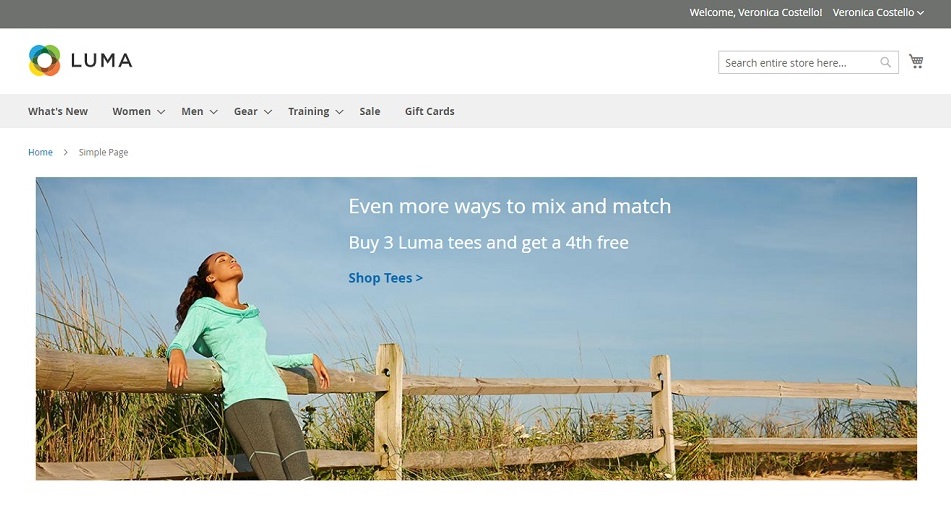
[Source: Adobe Commerce]
2. Gift Registries
Gift registries in Magento cater to customers who are looking to register for a special occasion, like a wedding or baby shower.
The customer who creates the registry can easily add, remove, and modify items at any time, while friends and family members can access the list through an email link, or by searching for the registry using Magento’s gift registry search widget.
Shoppers can add items directly to their cart from the registry, and once an order is officially placed, the registry is automatically updated to show the items that have been purchased, along with the quantity.
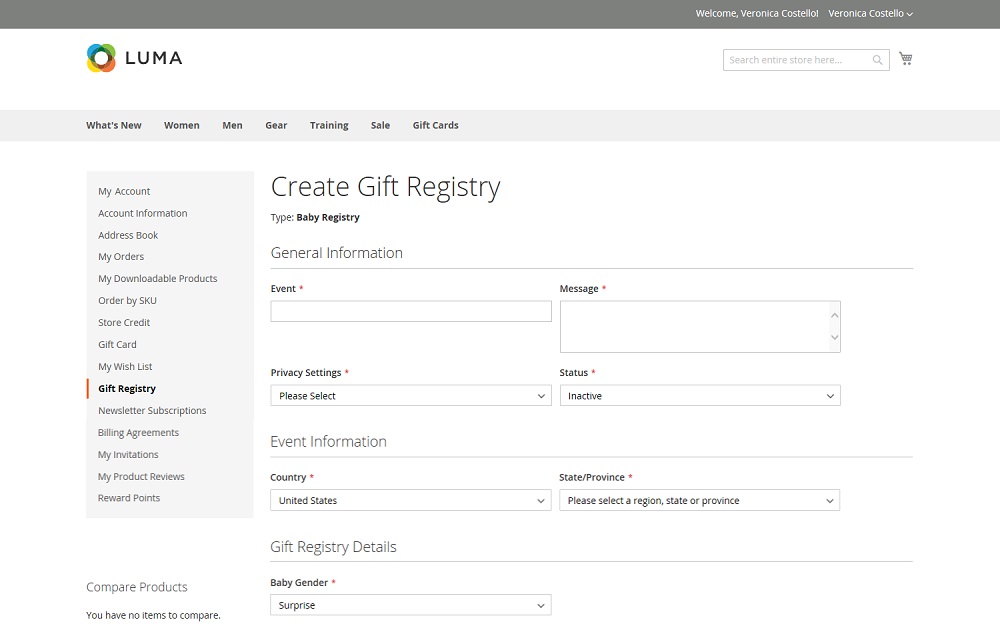
[Source: Adobe Commerce]
3. Private Sales & Events
Private sales in Magento allow you to give certain parties special access to chosen products or services within your e-store.
When is this most beneficial? When it comes to catering to your VIP customers.
Along with managing who has access to the event and what information they will receive when they land on the page, you can also use custom messaging to greet customers, featuring discounts or special offers, to truly roll out the red carpet.
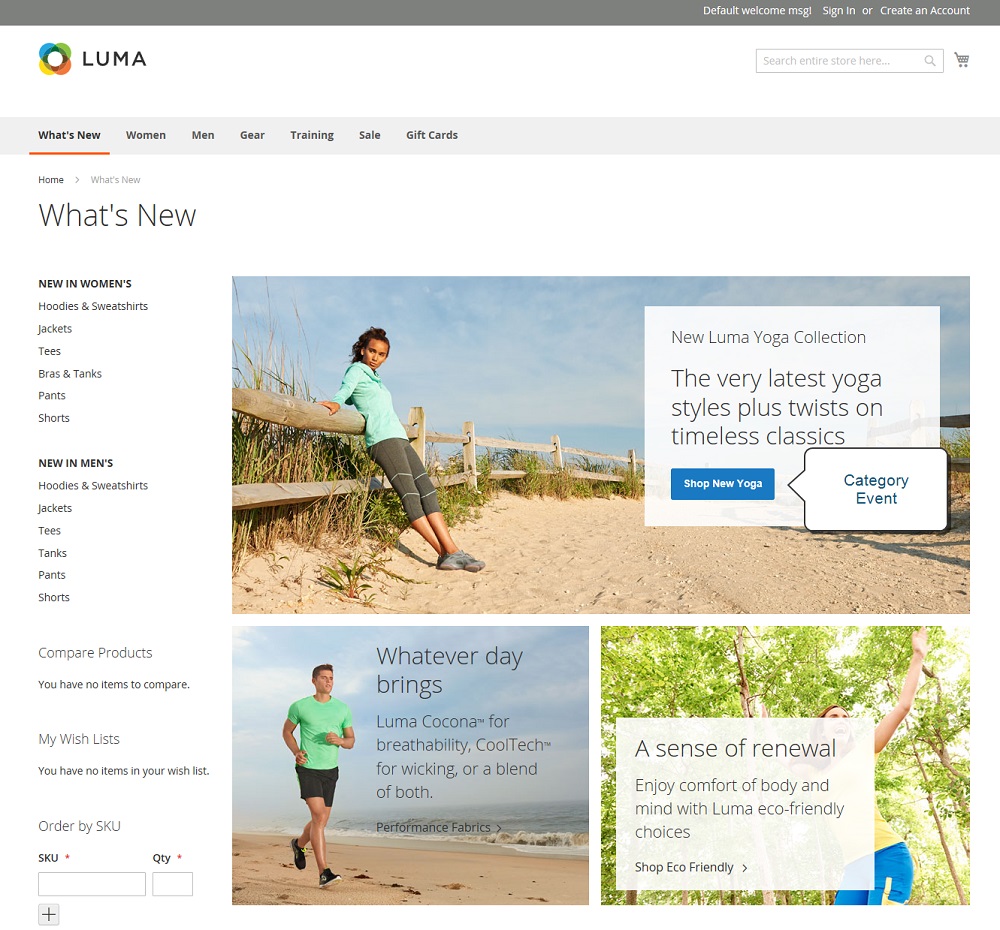
[Source: Adobe Commerce]
With the ability to customize user groups, the private sales feature allows you to create an exclusive shopping experience for customers, giving them early access to a new product launch, a limited-time discount or something else.
Whether your intent is to offload surplus product, generate new leads or leverage your current customer base to create buzz around a product, these VIP and Members Only sales allow your customers to feel like they’re getting the royal treatment — one of the best ways to foster brand loyalty.
As a store owner, you can use the event ticker feature to display a countdown clock for the event, allow customers to send exclusive invitations to their friends, and track the invitation conversion rate with private sales reports.
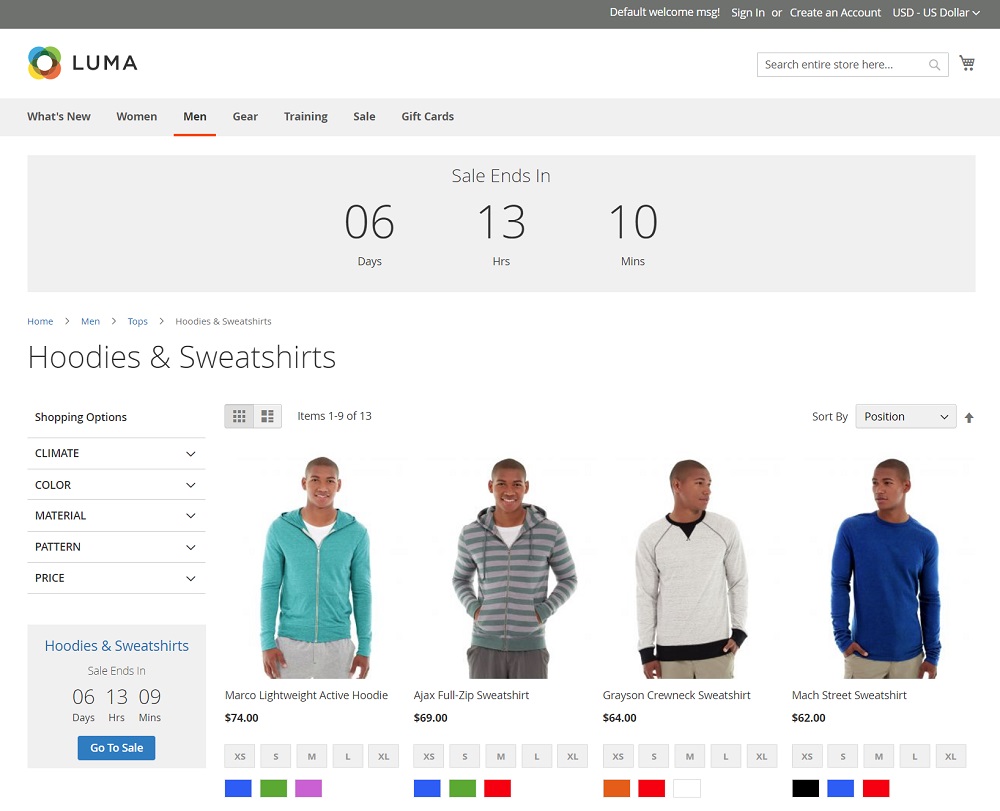
[Source: Adobe Commerce]
4. Rewards & Loyalty
With Magento’s rewards and loyalty feature, customers can accumulate points through various actions, like making a purchase or submitting a product review, and the points can then be redeemed for discounts or special offers.
Magento’s gifts, discounts, exclusive offers, and points-based rewards system allows you to turn customers into loyal brand ambassadors.
The platform grants you full control over your loyalty rewards program, allowing you to create unique customizations that help you reinforce customer engagement.
Additionally, Magento’s cart price rule allows you to offer discounts or free items depending on various criteria, tracked by Magento. You can use this feature to increase sales via promotions, while also gaining valuable insights into customer behavior through analytics.
In a nutshell, utilizing these features when designing for Magento provides you with a simplified rewards program that boosts brand loyalty and revenue, all through a cost-effective, admin-friendly platform.
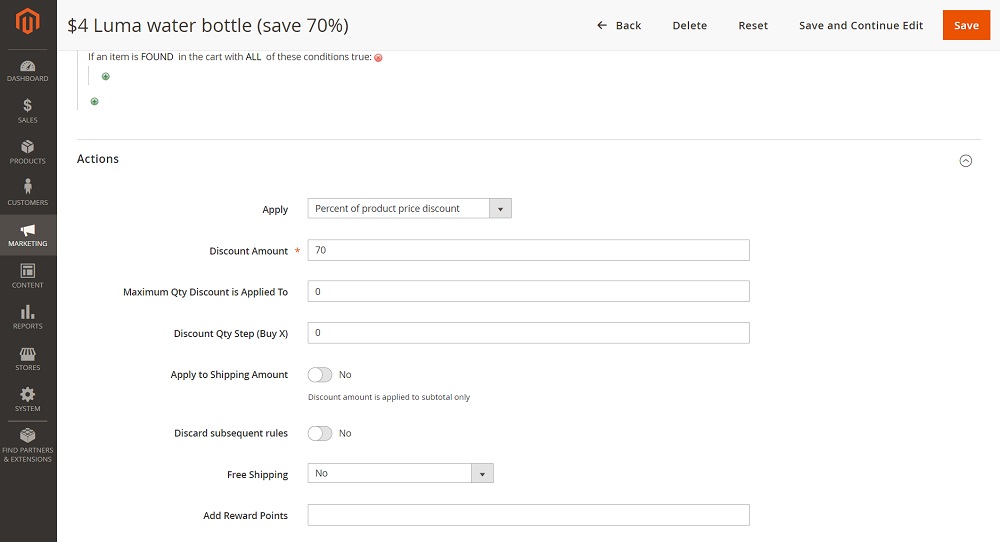
[Source: Adobe Commerce]
5. Gift Cards
The gift card feature in Magento allows customers to purchase electronic or physical gift cards. While electronic gift cards can be sent via email and customized with a special message, physical gift cards can be printed by the customer and mailed to the recipient.
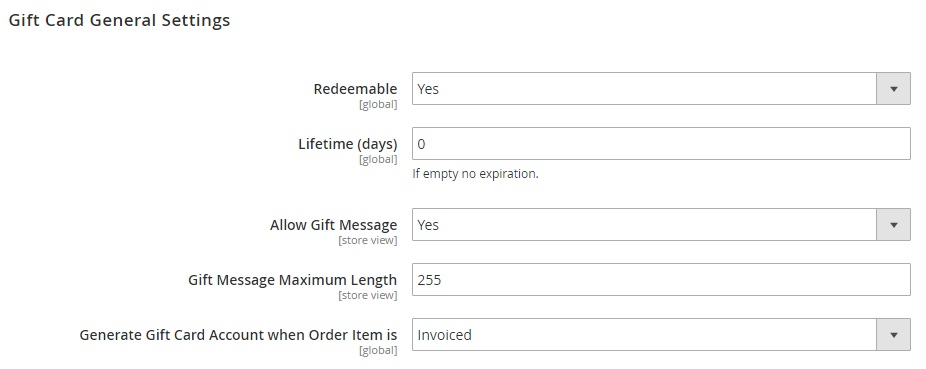
[Source: Adobe Commerce]
As a store owner, Magento’s gift card accounts feature allows you to maintain a record of each gift card, including its balance and usage.
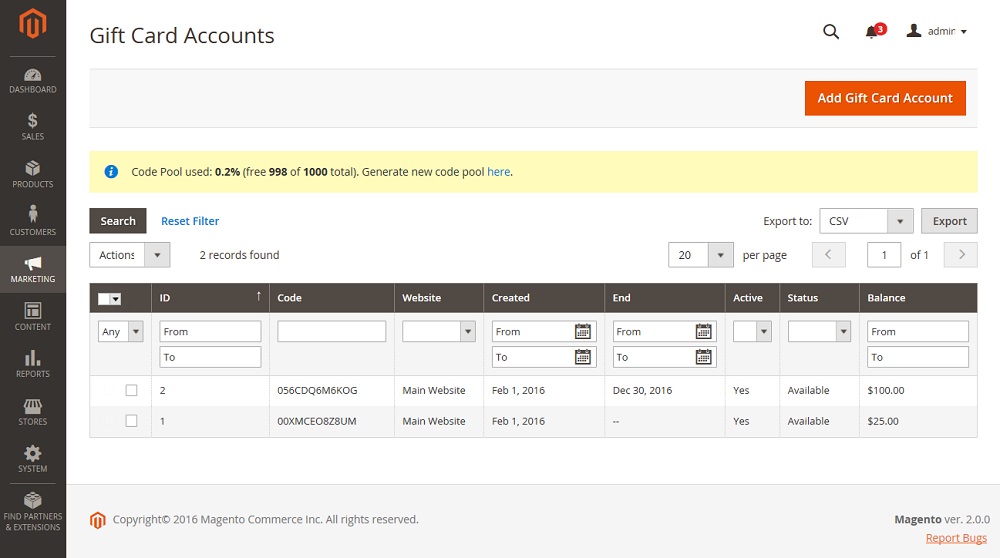
[Source: Adobe Commerce]
Expert Tips For Magento eCommerce Design
As a Magento website design agency, our experts are more than a little familiar with designing for Magneto. We build dynamic e-stores that boost brand visibility, provide an engaging user experience and encourage conversion.
Here are some of our top tips for eCommerce design on Magento:
1. Customize Your e-Store
While Magento offers plenty of prebuilt theme options, the only way to take full advantage of the platform’s capabilities is to opt for a custom website design.
Templates have limits when it comes to features, functionalities and customization, but with a custom Magento theme design, you have nearly an endless list of options for making your e-store a true representation of your brand and delivering a superior user experience that drives engagement and conversion.
2. Simplify Navigation
If you offer hundreds or even thousands of products, navigation can easily become overwhelming for the customer, if it’s not strategically planned and executed.
To simplify navigation across your website:
- Separate your products into several main categories and keep the tabs on your navigation menu as minimal as possible
- Use a two-tier navigation system that maps out the hierarchy of pages, so the customer understands the organizational flow
- Implement a sticky menu that follows the customer, so they don’t need to scroll all the way up or down to move from page to page
- Add a search bar to the nav menu so customers can easily find what they’re looking for
- Place a cart CTA in the nav menu so customers can easily add items, view their cart and start the checkout process without hassle
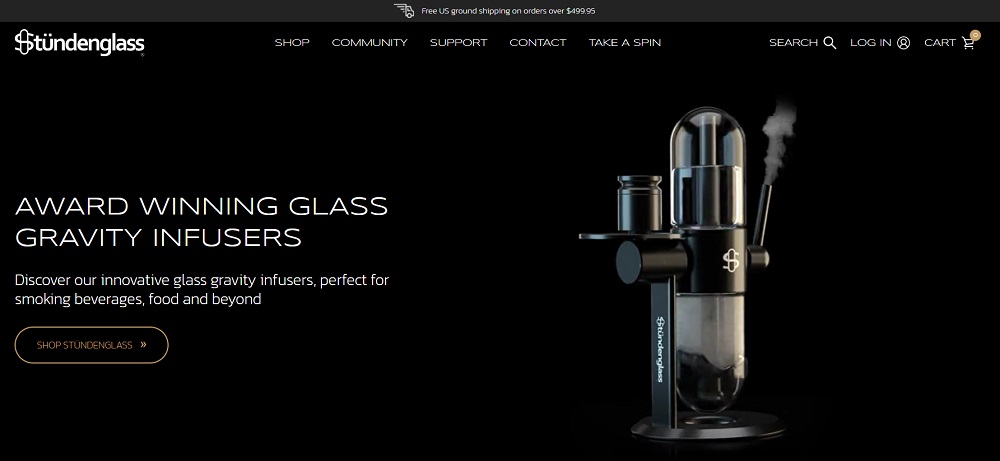
3. Provide An Immersive Product Experience
In eCommerce, it’s all about the product experience — this is one area you cannot afford to skimp on as a store owner. Tailor your product presentation to your offering, in terms of product descriptions, images, videos, how-to explanations and other features.
For example, if you sell furniture or large home gym equipment, your product experience might include:
- Product descriptions that detail exact dimensions, materials and care instructions
- Images from every angle
- A 360-degree rotating feature
- An augmented reality feature that allows customers to see the item in their space
- A video or copy that explains assembly instructions
- A filtration system that allows the customer to filter products by different categories
See our Magento design for EuroLux below, for example. It includes high-quality images, zoom features and an informative video to provide a superior shopping experience.
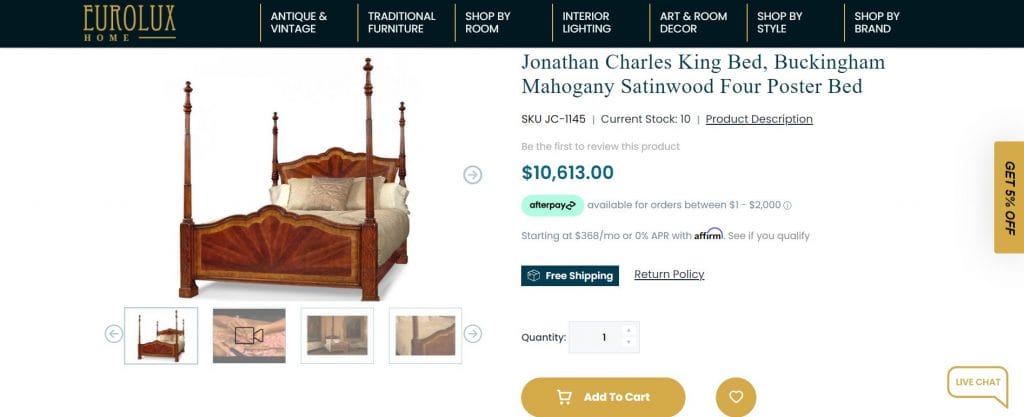
4. Streamline The Checkout Process
Consumer studies have shown that 87% of shoppers are likely to abandon their cart mid-checkout if they find that the process is too complicated or is taking too long.
While you might think that forcing customers to create an account will lock them in as return customers or provide you with better analytics, the truth is that consumers expect quick and easy results.
If you don’t deliver, you not only miss out on immediate revenue but also future revenue, as more than half of consumers are unlikely to ever return to a brand after abandoning a lengthy checkout process.
The solution? That nav menu cart link we talked about earlier, and a guest checkout option.
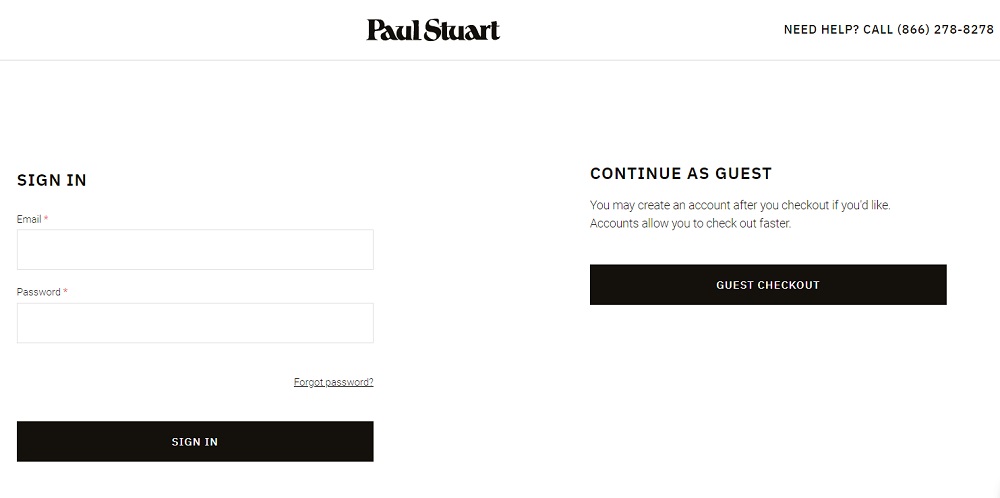
[Source: Paul Stuart]
5. Optimize Your Site For Search Engines
Optimizing your website for search engines goes beyond keyword research and implementation. The design of your e-store actually plays a key role in SEO.
To optimize your e-store for search engines when designing for Magento:
- Keep navigation simple: As we mentioned above, simple navigation is key to ensuring the customer can find what they’re looking for. Navigation structure also impacts bounce rate, which has a direct effect on your search engine ranking.
- Create a clear page hierarchy and website infrastructure: Search engines use these elements to crawl your website and determine your search engine ranking.
- Use graphics with care: While images, videos and animations can increase engagement, they can also slow down your page loading speed if they’re overused or not optimized. Test your loading speed on both desktop and mobile and optimize or remove graphics if needed, to make sure your website loads in three seconds or less.
- Prioritize readability: While elements like typography, font size and color palette don’t directly affect SEO, they do affect the user experience, which in turn affects SEO.
- Opt for a responsive or mobile-first web design: Google indexes the mobile version of a page before it indexes the desktop version, so catering to mobile shoppers is important for both conversion and SEO.
Contact our Magento experts. Set Up A Consultation
Magento eCommerce Design Examples
From high-end clothing to tech gear, textiles, coffee and beyond, businesses of all sizes and across industries utilize Magento’s extensive design features.
Before we show you some great Magento eCommerce designs, you may want to explore our article on bad website design for additional tips and insights before designing your store.
Now, here’s a look at a few of our favorites:
1. Nespresso
Website: www.nespresso.com/us/en
Brand: Nestle-owned company that offers coffee, home coffee machines and accessories.
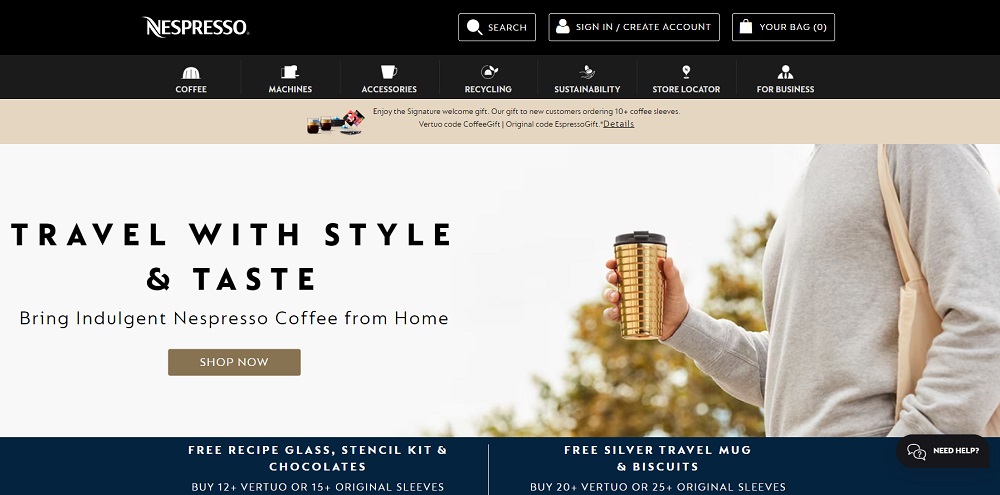
If you’re a coffee drinker, Nespresso needs no introduction. Part of the Nestle Group, Nespresso’s Magento website is a hub for both B2C and B2B consumers (note the For Businesses tab in the menu).
One of the most notable features on the site is the Find Your Perfect Nespresso section, where you can enter your unique preferences and the store generates purchase recommendations.
The e-store also offers a signature welcome gift for new customers, an interactive store locator feature and a Nespresso referral rewards program.
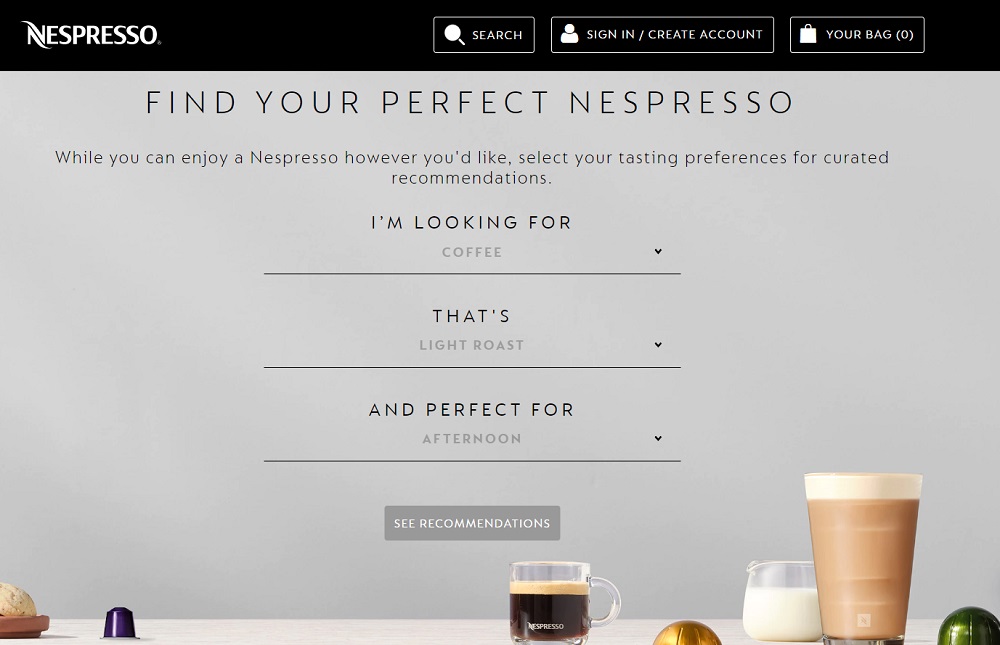
2. SCUF Gaming
Website: www.scufgaming.com
Brand: A Georgia-based company that offers customized, high-performance controllers for gamers across the globe.
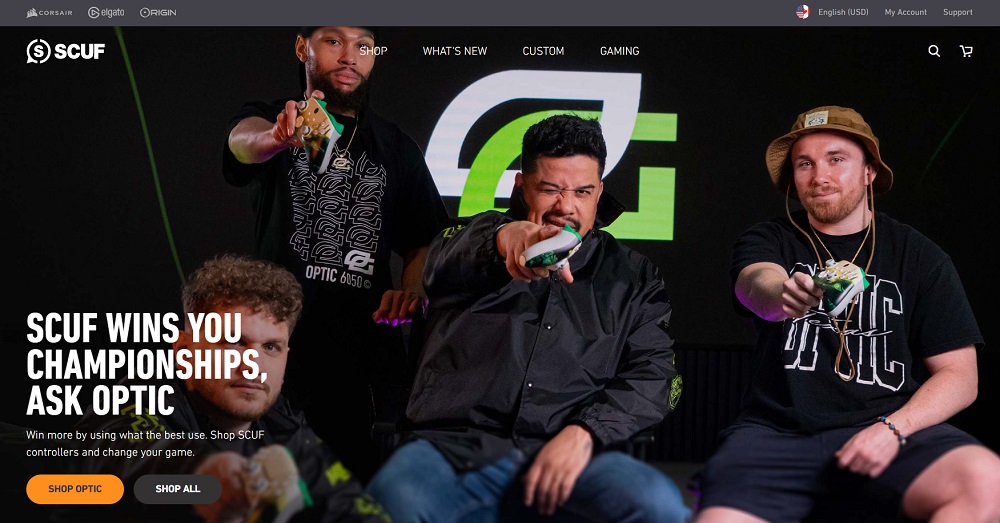
With nearly 3 billion gamers around the world, SCUF knows the importance of having a high-performance website that matches their innovative offering.
Most notably, the Magento e-store boasts an interactive customization feature, where the customer can move between designs, and the design is instantly applied to the lifelike controller on the screen.
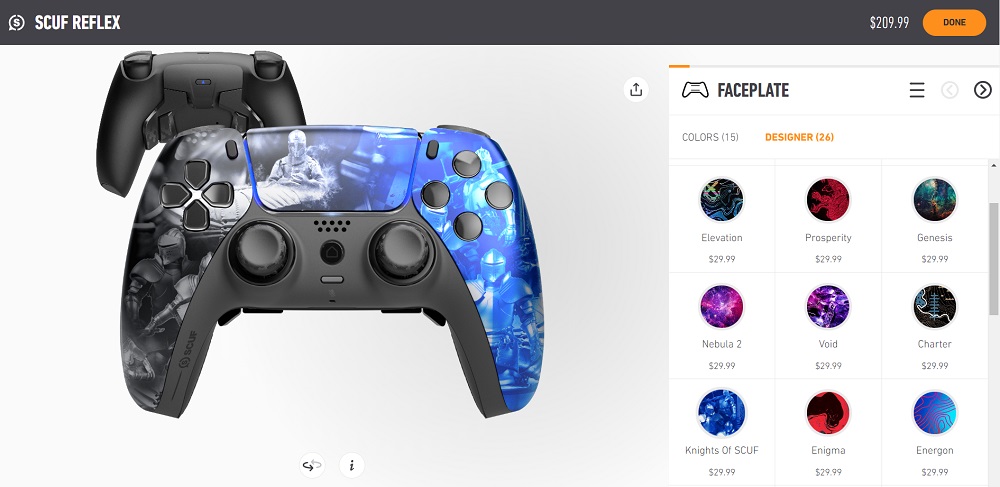
3. Juice Generation
Website: www.juicegeneration.com
Brand: An independently owned and operated company with numerous locations throughout New York, offering signature juices, smoothies and acai bowls.
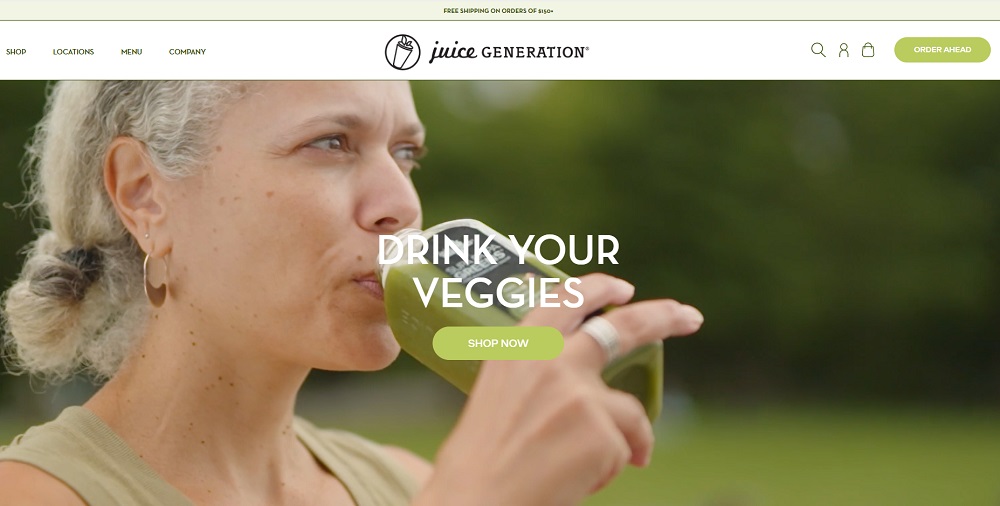
Full transparency: this one is an in-house example of designing for Magento — it’s from our own Digital Silk kitchen!
Juice Generation takes advantage of Magento’s platform by incorporating an immersive video on the homepage, as well as high-quality images throughout the site.
The product descriptions include detailed ingredient and nutrition info, and an Order Ahead CTA in the the sticky navigation bar allows customers to place an order at a nearby shop and skip the line.
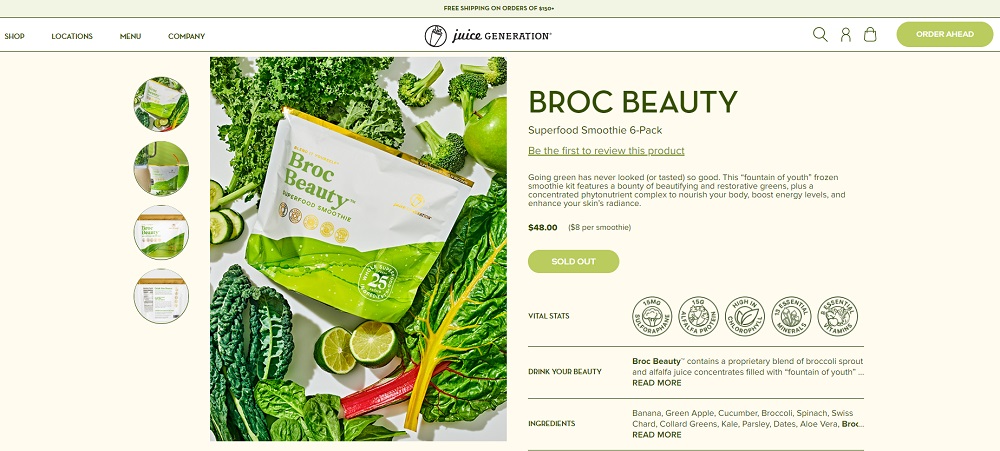
4. Big Bus Tours
Website: www.bigbustours.com/en
Brand: The world’s largest operator of open-top seating bus tours.
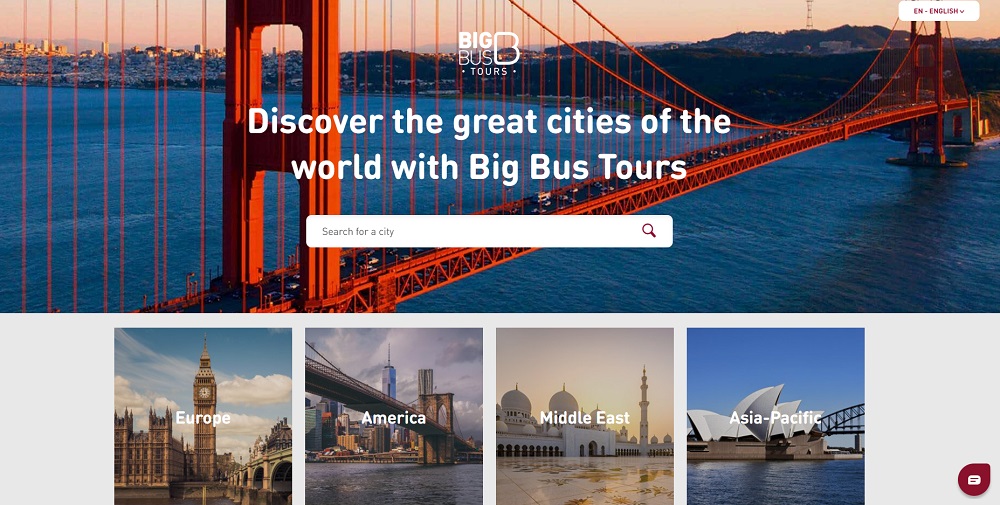
Operating across four continents, Big Bus Tours opted for a Magento e-store platform that provides customers with value-packed information on world-famous destinations.
After choosing the city you’re interested in through the hero section search bar, you can explore different landmarks, routes and tours, and instantly book tickets through a lightning-speed checkout process — simply select a tour, ticket quantity, date and time, and you’re set.
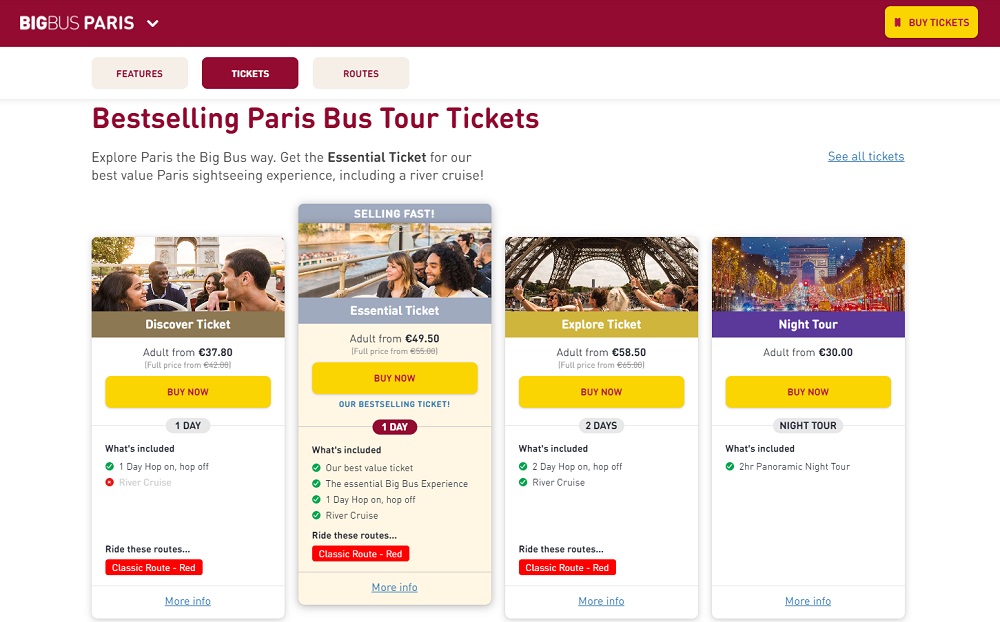
5. Sigma Beauty
Website: www.sigmabeauty.com
Brand: A global beauty brand that boasts over 200 retailers across 70 countries.
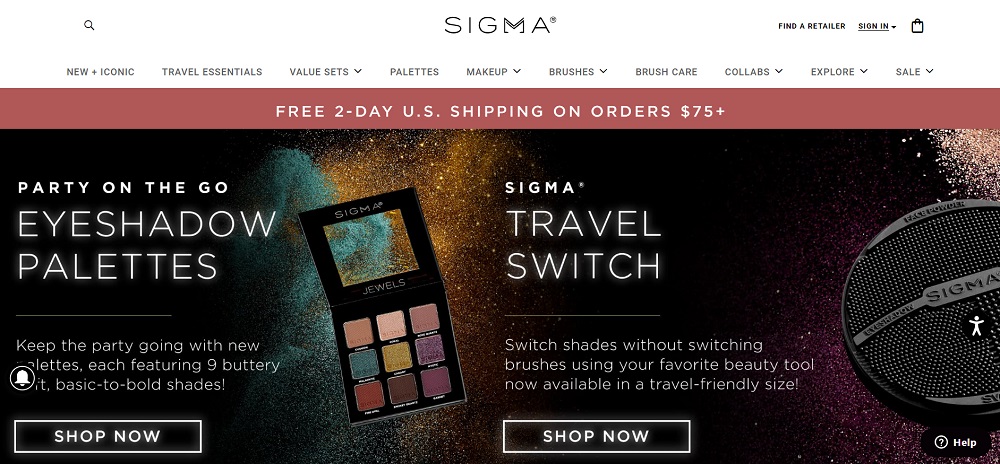
With an e-store that caters to two different audiences: B2C (consumers) and B2B (retailers), Sigma Beauty takes advantage of the many features and functionalities Magento offers.
From sale banners to product highlights and an integrated Instagram feed, the beauty brand offers an immersive experience while allowing customers to browse seamlessly through the extensive online storefront.

6. Carnegie
Website: www.carnegiefabrics.com
Brand: A B-Corp certified textile manufacturer that offers sustainable upholstery, wall coverings and other products, all free of PVC.
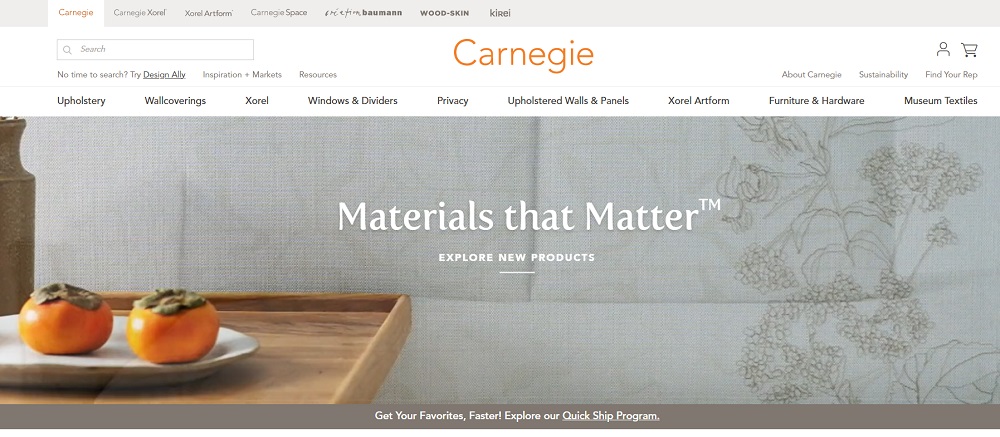
Another example from our Digital Silk kitchen, designing for Magento in Carnegie’s case meant organizing their extensive e-store offering using product categories and a carefully planned website architecture.
Each product page includes high-quality images, detailed description, specs and sustainability information, along with the option to order a sample.
From a welcome video in the hero section to high-quality images, subtle animations, a search bar and an extensive search filter system, the brand takes full advantage of Magento’s design features to offer an immersive, user-friendly experience.
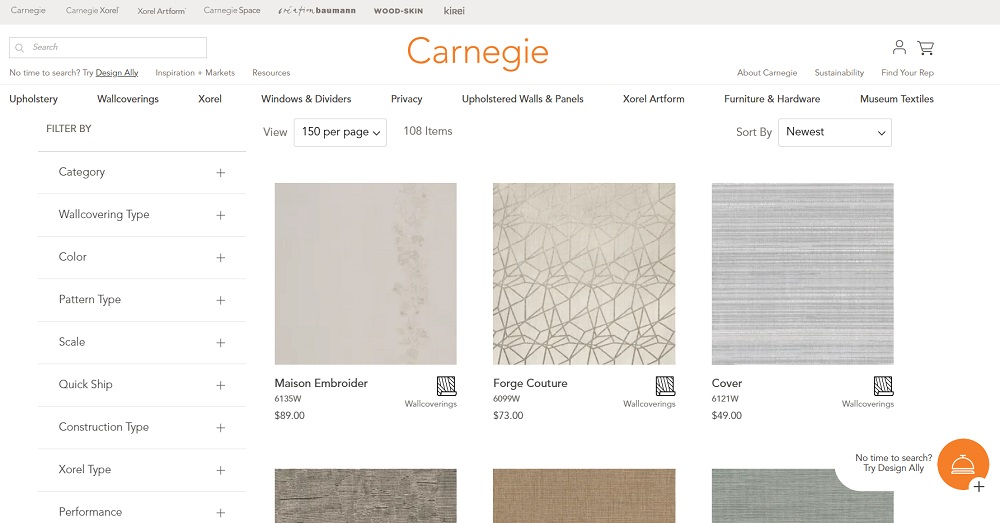
Our Magento eCommerce Web Design Process, End-To-End
At Digital Silk, we’ve created a step-by-step guide that we follow for every website design process, tailored along the way to each project’s specific needs.
Here’s a look at our in-house process when designing for Magento e-stores, end-to-end:
1. Strategy & Planning
After an onboarding meeting where we get to know each other, and we gather insights about your brand and goals for your Magento project, we dive headfirst into research.
We analyze your industry, competitors and audience behavior, compiling all of the data we need to make strategic decisions regarding your custom design.
Armed with these insights, we move into website planning to build a strategy that’s tailored to meet your specific goals, including a detailed SEO plan, your e-store’s sitemap, conversion funnels and sample messaging.
2. Wireframing
Part of our UX design process, the next stage we migrate into is wireframing. This is where we create black-and-white mid or high-fidelity blueprints to map out your website. Your wireframes will detail your e-store’s information architecture, conversion funnel and key messaging.
Once you approve your wireframes, we move on to the next stage in the project — UI design and development.
3. UI Design & Development
This is where your Magento e-store comes to life. We add all of your unique branding elements to your website, from your logo to your color palette, typography and visual elements, to provide you with a full-color view of your new e-store.
Next, we move to Magento development, where our certified developers write and finalize the code for your custom e-store. We include all of the features, functionalities and Magento integrations you need to provide a superior user experience for your customers.
4. Launch & Maintenance
Finally, it’s time for launch! After a thorough quality assurance check in which we ensure fast page loading speed, full optimization and complete security, we push your e-store live. We keep a close eye on its performance, hopping in to adjust coding or further optimize elements if needed.
After you’re up and running, you can choose to continue our partnership with our comprehensive maintenance services. Our experts will maintain your website long-term, updating security patches and optimizing to ensure your e-store remains up to date with the latest eCommerce trends and best practices.
Speak with our experts. Set Up A Consultation
Designing For Magento With Digital Silk
As a leading Magento eCommerce design company, our team at Digital Silk is comprised of award-winning designers, top developers, branding and marketing experts, digital strategists and more.
For us, designing for Magento means taking full advantage of the robust platform to build custom e-stores that boost brand visibility, drive organic traffic, offer an engaging user experience and funnel website visitors toward conversion.
Our process is heavily rooted in research and planning. From your design aesthetic to your conversion funnels and messaging, we utilize data-driven insights into your industry, competitors and target market to build an e-store that drives measurable results.
Every Magento store we create is fully responsive across devices, scalable, secure and optimized for both search engines and conversions.
In addition to superior, custom design, we promise complete transparency, expert guidance and recommendations, and strategies that are unique — tailored to help you reach your ideal KPIs.
We offer custom quotes for every project — contact our team to schedule a consultation! Meet our award-winning designers and ask us about our process when designing for Magento.
"*" indicates required fields


